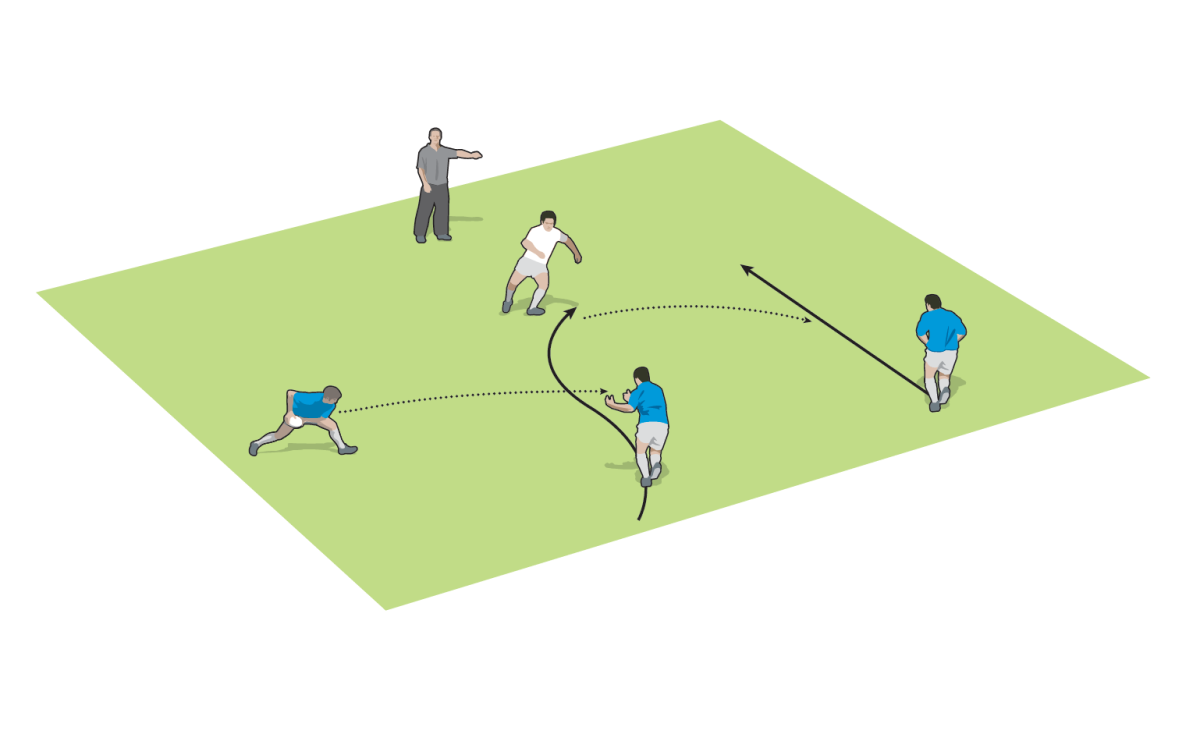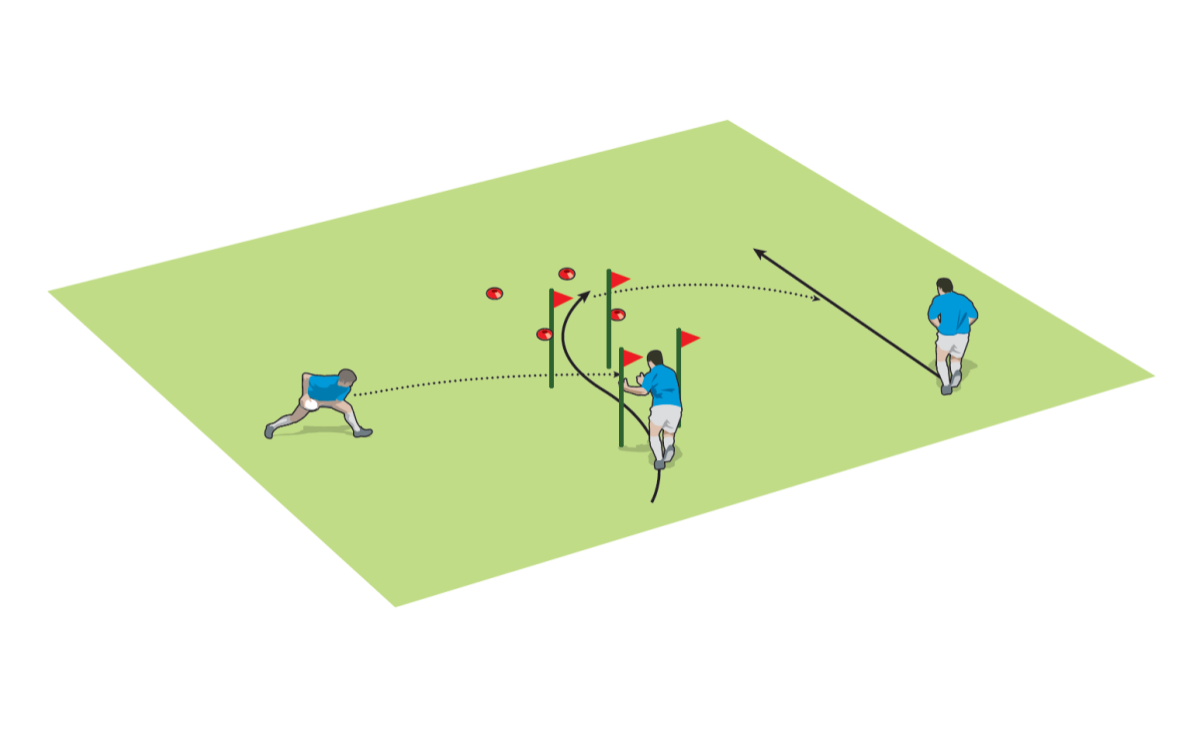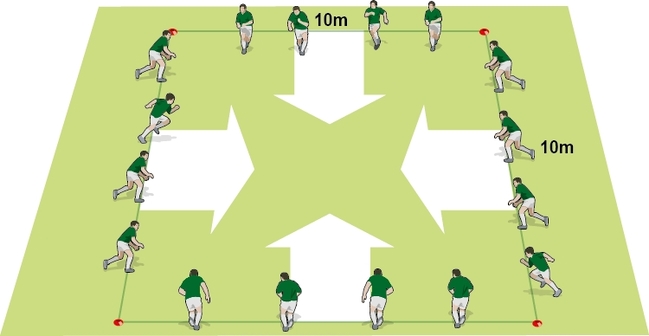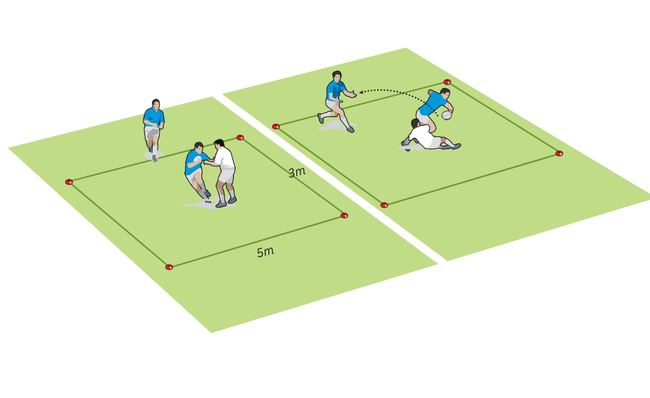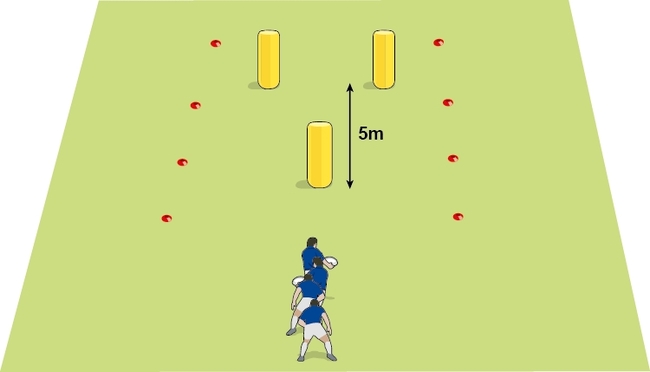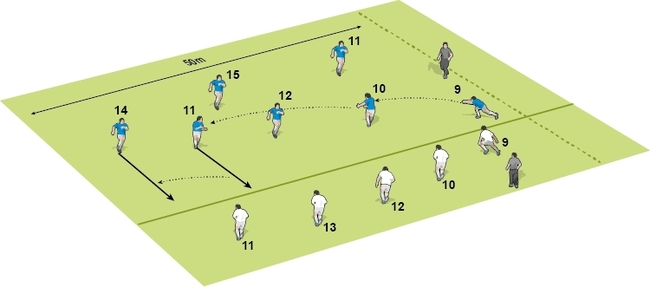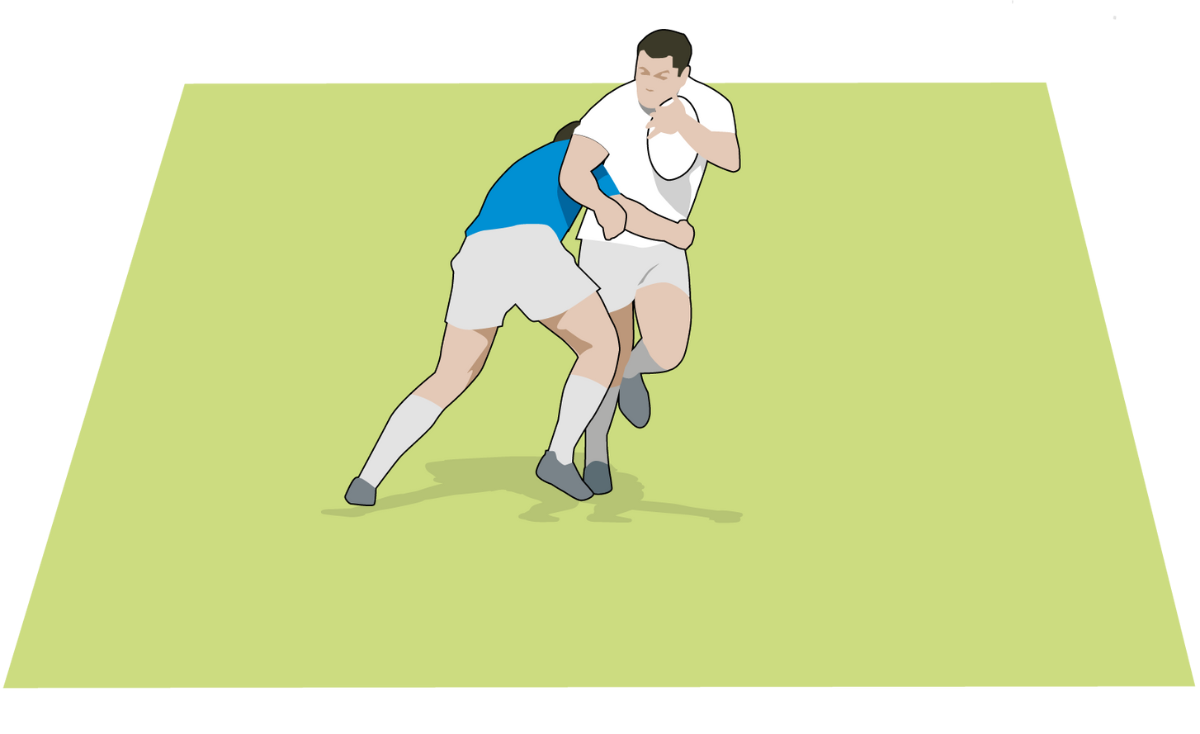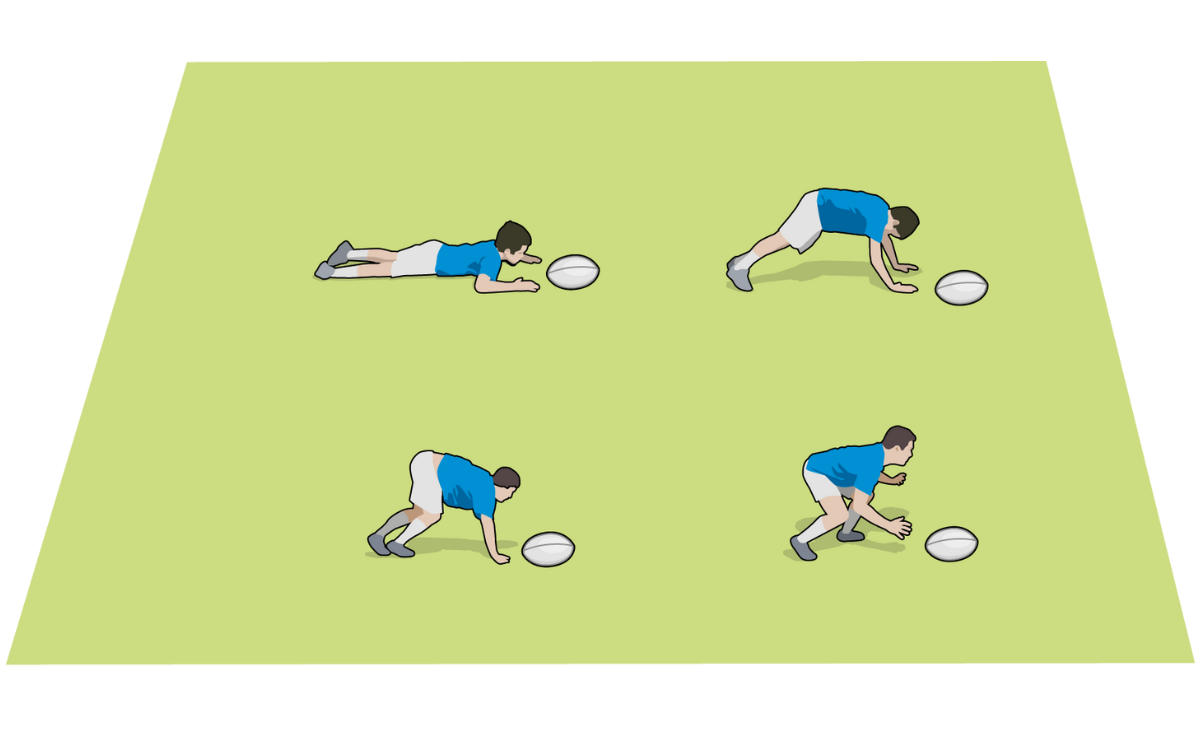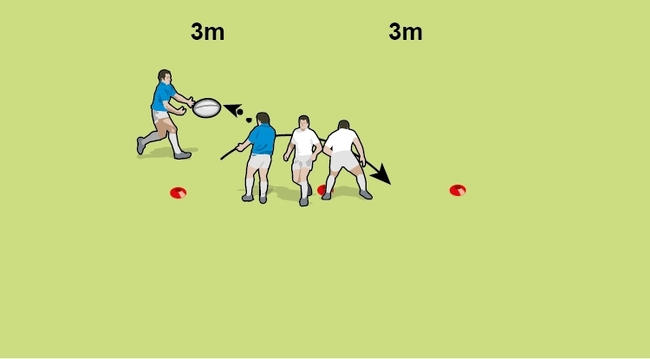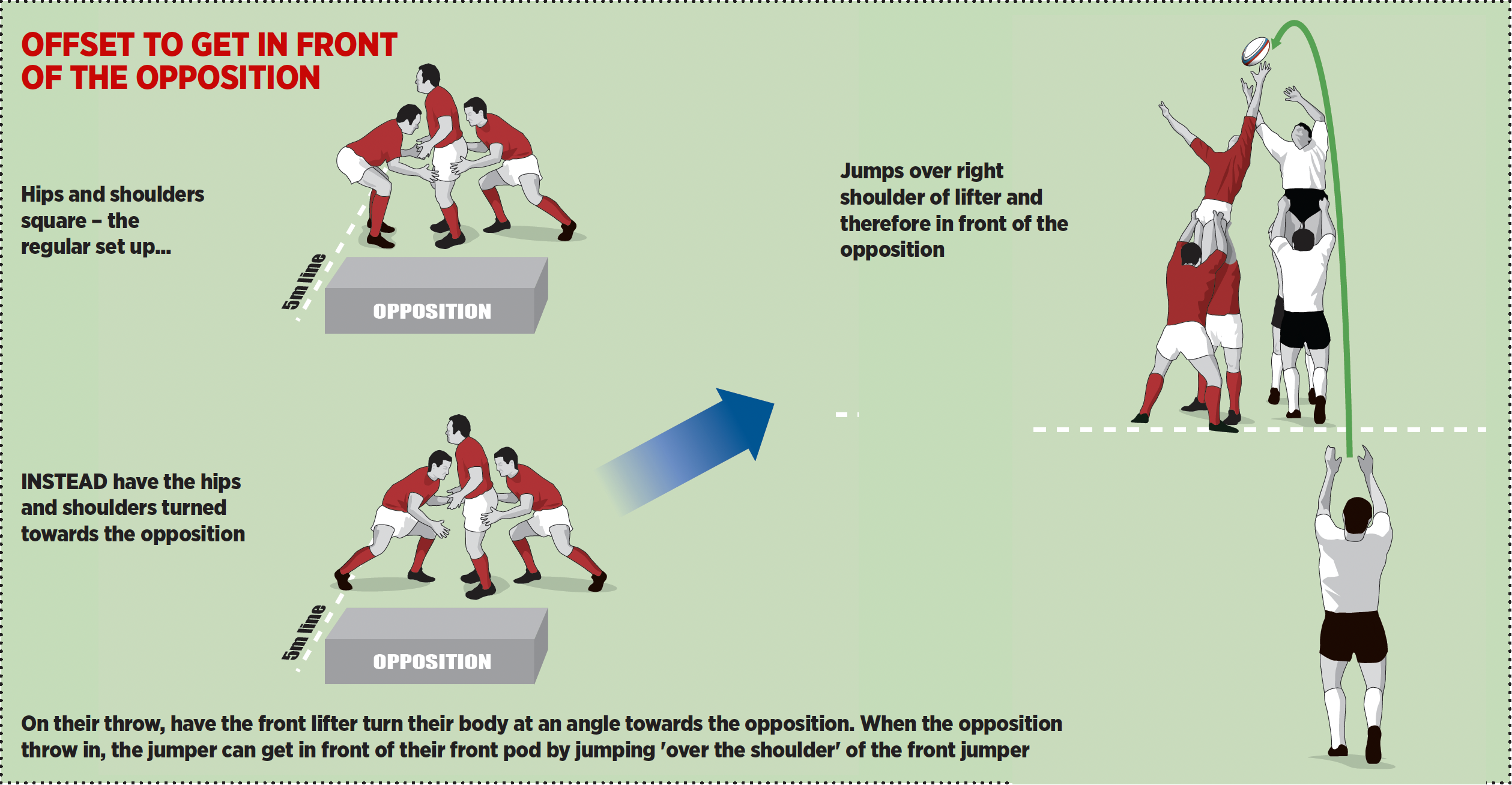Banish the drift attack
Why do players drift out in attack and play into the hands of the drift defence? Here, Leicester Tigers’ academy coach TOSH ASKEW offers simple solutions...
Depth to select your line
The greatest reason for drifting is lack of depth and, hence, the time and space to be able to select your line, rather than be dictated to by the defender.
You need to get players to understand that, when they get the ball, the most important space to them is between them and the defender, not the space out wide or behind the defence.
Players must not ball watch, but should scan all the time. In doing this, they will manage their depth by changing speed or line, or both.
Control of their feet and core are crucial to doing this. That means they stay balanced and do not fold at the hips or waist, so the legs go the same way as the upper body.
If they have control of their core, they are stronger in the pass and can follow the pass rather than fall off in the wrong direction.
To get players to scan, you should stand behind the defender with coloured cones. As the attacker sets off, hold a cone up – they must call out what colour it is. Do it again as soon as they have caught the ball, or even again just before it is about to be passed.
The depth needed is dependent on their technique and skill under pressure. The more they are exposed to this, the better they will become at knowing what depth they require.
Hold and fix
Coaches tell players to run straight. This is better than drifting out with the ball in their hands.
However, a good defender who can stay square to take an attacker who is coming straight can usually drift out on to the next receiver.
We should be aiming to make defenders turn in, and not be balanced enough to push straight out on to the next attacker.
With the correct depth-control, players will need to follow an out-to-in line. This means firstly going as if you are taking an ’overs’ or ’drift’ pass, which will turn the defender out.
Then, the attacker turns back in to push the palms of their hands to the passer. This will turn the defender back in, so they will not be in a position to get out to the recipient of the attacker’s pass.
It is crucial that the attacker stays as square as possible up to the point of delivering the pass.
If they do a good job of turning the defender in, they can pass quite early. If they don’t keep the defender turned in, they must carry the ball longer and make the defender bite as they pass.
A simple practice is to put cones on the ground that guide the attacker along the lines you need.
The best things are poles to run through – this is crucial to get the player square as they pass.
The poles also make the player look in front more, or they collide with poles, just as they will collide with defenders.
-
In a 2v1 exercise, stand behind the defender and ask the first receiver to call out the number of fingers or the colour of the cone you are holding up.
-
Do it before they receive the ball, just before they catch it or again just after it is passed.
Related Files
-
If the passer can be square before they pass, they will fix the defender more effectively.
-
Use poles and cones to help the receiver run the right out-to-in line.
Newsletter Sign Up
Coaches Testimonials

Gerald Kearney, Downtown Las Vegas Soccer Club

Paul Butler, Florida, USA

Rick Shields, Springboro, USA

Tony Green, Pierrefonds Titans, Quebec, Canada
Subscribe Today
Be a more effective, more successful rugby coach
In a recent survey 89% of subscribers said Rugby Coach Weekly makes them more confident, 91% said Rugby Coach Weekly makes them a more effective coach and 93% said Rugby Coach Weekly makes them more inspired.
Get Weekly Inspiration
All the latest techniques and approaches
Rugby Coach Weekly offers proven and easy to use rugby drills, coaching sessions, practice plans, small-sided games, warm-ups, training tips and advice.
We've been at the cutting edge of rugby coaching since we launched in 2005, creating resources for the grassroots youth coach, following best practice from around the world and insights from the professional game.
